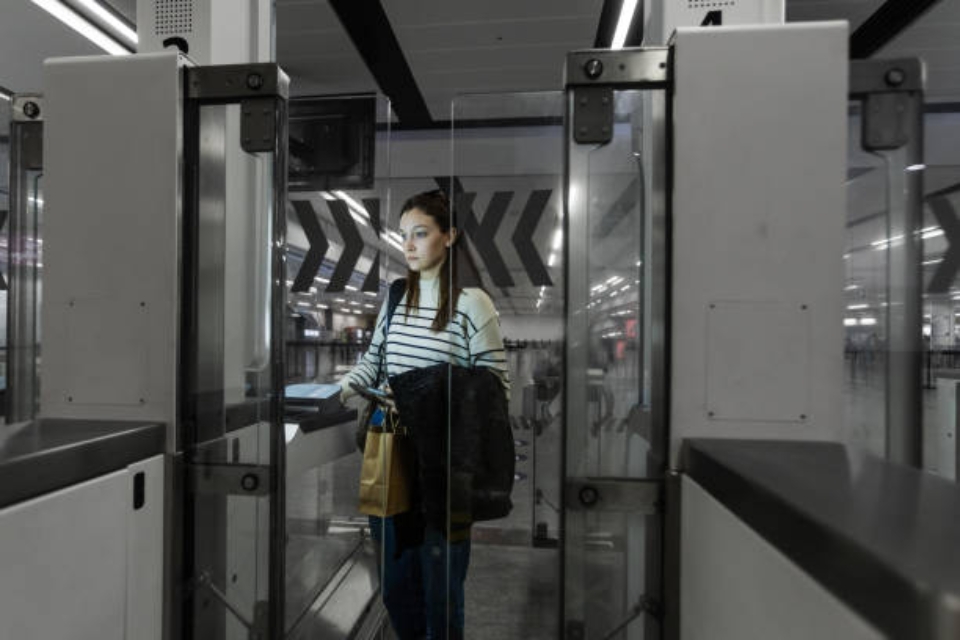EU Confirms Official Entry/Exit System Launch in November

27
Aug 2024
The European Union (EU) is gearing up for a major change in how it manages its borders.
Starting November 10th, 2024, a new digital system called the Entry/Exit System (EES) will go live, transforming how non-EU travelers enter and exit the Schengen Area.
This high-tech upgrade aims to enhance security and streamline border crossings, but it is also raising concerns about potential delays and privacy issues.
A digital leap for EU borders
The EES marks a significant shift from the old-fashioned passport stamping to a more modern, computerized approach.
When travelers from outside the EU arrive at a Schengen border, they will need to scan their passports at self-service kiosks. These machines will collect important information like names, travel document details, and even fingerprints and facial images.
EU Home Affairs Commissioner Ylva Johansson announced the launch date during a visit to eu-LISA, the agency responsible for the system’s IT infrastructure.
She emphasized the EES’ role in improving border security, saying, “With the EES we will know exactly who enters the Schengen area with a foreign passport. We will know if people stay too long, countering irregular migration.”
Who needs to use the EES?
The new system applies to non-EU citizens entering the Schengen Area for short stays. This includes tourists, business travelers, and others who do not need a visa to visit Europe.
However, some groups are exempt from the EES:
-
EU citizens and their family members
-
Residents of EU countries with long-stay visas
-
Citizens of Andorra, Monaco, San Marino, and Vatican City
It is important to note that while the EES covers most of Europe, it will not be used in Cyprus or Ireland.
However, it will apply to non-EU Schengen countries like Iceland, Liechtenstein, Norway, and Switzerland.

(Image courtesy of Subhashish Panigrahi via Wikimedia Commons)
Potential travel hiccups
While the EES promises to modernize border control, there are worries about possible delays, especially during busy travel periods.
The UK government and travel industry representatives have expressed concern about long queues, particularly for ferry traffic between Dover and Calais.
To address these issues, Guy Opperman, a UK transport minister, mentioned a “six-month soft launch” to ease the transition. This might include more flexible measures to keep traffic flowing smoothly if delays become a problem.
Next step: ETIAS
About six months after the EES launches, another system called ETIAS (European Travel Information and Authorization System) is set to begin.
This online pre-travel authorization will be required for visa-exempt travelers visiting the Schengen Area.
While an exact date has not been announced, ETIAS is expected to start in 2025.
ETIAS will work alongside the EES, adding another layer to the EU’s border management strategy.
Travelers will need to apply online before their trip, paying a €7 fee for an authorization that lasts three years.

(Image courtesy of hxyume via iStock)
New way of entering and exiting the EU
The introduction of the EES and ETIAS will significantly change how people enter and exit the EU.
For short-term visitors, it means getting used to new procedures at borders and planning ahead for ETIAS approval.
The good news is that once registered in the EES, subsequent trips should be smoother as your information will already be in the system.
For long-term visitors and migrants, the impact might be less noticeable day-to-day, but the EES will make it easier for authorities to track overstays.
This could lead to stricter enforcement of visa rules and potentially affect future visa applications for those who don’t comply with their allowed stay duration.
These systems tie into broader Schengen visa policies by enhancing the EU’s ability to monitor and control entries and exits.
They are designed to work together to create a more secure and efficient border management system across the Schengen Area.
Shift in immigration policy
The EES and ETIAS represent a significant shift in EU immigration policy.
By digitizing border controls, the EU aims to better manage migration flows and improve security. This data-driven approach allows for more accurate tracking of who enters and leaves the Schengen Area, potentially influencing future policy decisions.
These systems could lead to more targeted immigration policies, as the EU will have better data on travel patterns and overstays.
It might also impact how the EU deals with illegal immigration, as the EES will make it easier to identify those who have overstayed their welcome.
Moreover, the implementation of these systems showcases the EU’s commitment to using technology to address complex immigration challenges.
As these tools evolve, they could pave the way for even more advanced border management techniques in the future.
A new chapter in European travel
The launch of the EES marks a significant shift in European border control. While it promises enhanced security and efficiency, it also brings challenges that travelers and authorities alike will need to navigate.
As November approaches, all eyes will be on the EU to see how smoothly this digital transition unfolds.
Related
Brits forced to pay fee to visit these 30 countries…
UK tourists will be required to pay a fee to visit 30 countries in Europe under new European Union (EU) travel rules.The rules mean British holidaymakers will n
The beautiful European island with just 148 locals
Irakleia is a beautiful island in the Minor Cyclades of Greece, nestled in the heart of the Aegean Sea and just an hour away from Naxos. Officially recorded t
Warning issued for Brits flying easyJet and Ryanair to popular…
Passengers flying with Ryanair, easyJet and British Airways should expect disruption (Picture: Urbanandsport/NurPhoto via Getty Images) Passenge










